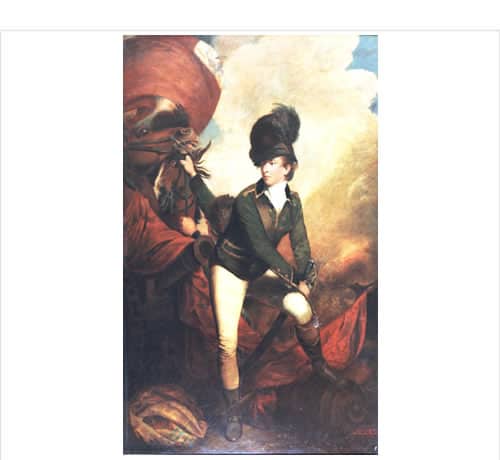The original portrait by Joshua Reynolds is in the National Gallery.
The Mess copy is, however, still impressive of Sir Banastre in the green standard uniform of the British Legion, a provincial unit organised in New York, in 1778.
Born in Liverpool he was later educated at Oxford before purchasing a cornetcy in the 1st Dragoon Guards.
In December 1775 he sailed to America with the Earl, later Marquess, Cornwallis, where his services were soon rewarded gaining him the position of a Brigade Major of cavalry in 1776. His cavalrymen were called “Tarleton’s Raiders”.
He was present at the Battle of Brandywine and as a commander of the British Legion, a mixed force of cavalry and light infantry; he proceeded at the beginning of 1780 to south Carolina rendering valuable services to sir Henry Clinton. The operations culminated in the capture of Charleston.
After returning to Great Britain in 1781 at the age of 27, He was elected a Member of Parliament for Liverpool and returned to office in the early 19th century.
As such, became a prominent Whig politician despite his young man’s reputation as a roué. Sir Banastre came from a family of slavers and reflected that during his political career, where he was a prominent opponent of British abolitionists.
In 1794 he became a Major General and Colonel of the 8th Hussars, 1818-33. He was made a Baronet in 1815 and died without issue at Leinwardine in Shropshire on 25 January 1833.


